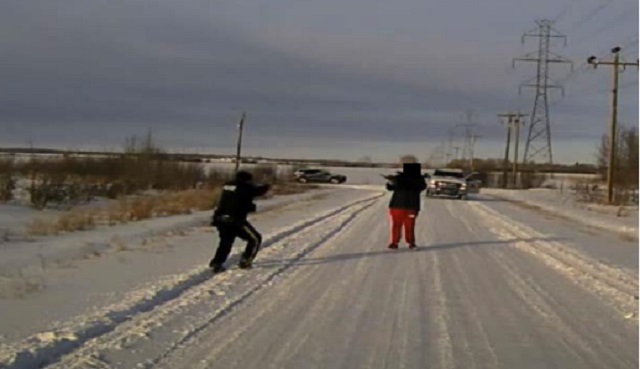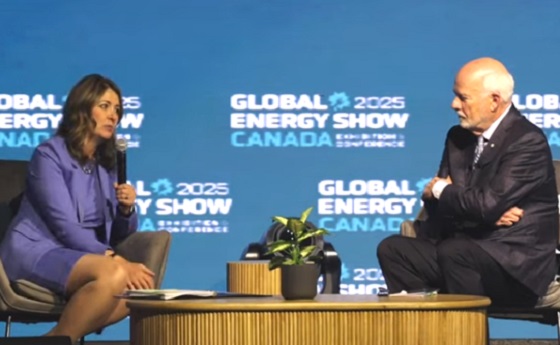Alberta
ASIRT investigations concluded on fatal officer-involved shooting involving the RCMP.

Incident investigation report from the Alberta Serious Incident Response Team (ASIRT)
Introduction
On December 22, 2022, the Alberta Serious Incident Response Team (ASIRT) was directed pursuant to s. 46.1 of the Police Act to investigate a then non-fatal Royal Canadian Mounted Police (RCMP) officer-involved shooting. The shooting of the affected person (AP) was reported to have happened during an interaction with him, as a result of him being a suspect in a complaint of a man with a gun.
While AP initially survived, he died of complications from the shooting the following day.
ASIRT’s Investigation
ASIRT’s investigation was comprehensive and thorough, conducted using current investigative protocols and principles relating to Major Case Management. Information from civilian witnesses, the subject and a witness officers, and importantly video recordings provided sufficient information to determine whether the force used by the subject officer during this incident was reasonable.
Circumstances Surrounding the Officer-Involved Shooting
On December 01, 2022, Maskwacis RCMP received a call reporting that a male [AP] had been drinking and left the caller’s house with a gun. AP was shooting the gun in the country (believed to be the area around the residence). Two RCMP officers responded.
Witness officer (WO) located AP walking on the road with a rifle. AP walked toward WO’s marked police vehicle with the rifle pointed at the vehicle/WO, while WO was seated in the driver’s seat. WO then exited his vehicle with his carbine rifle and moved to the rear of his vehicle while AP kept the rifle pointed at the police vehicle. The subject officer (SO) arrived on scene, but came from the opposite direction. AP turned around and walked toward SO with the barrel of the rifle pointed upwards. SO exited his police vehicle with his service pistol drawn and walked toward AP while he
repeatedly provided verbal direction to AP to drop the firearm. AP and SO were walking toward each other; at that time AP still had the barrel of the rifle pointed upward. As SO and AP got within approximately five meters of each other, AP lowered the barrel of the rifle and pointed it directly at SO. SO fired multiple rounds and struck AP with four rounds causing AP to stumble, drop the rifle and fall to the ground. AP initially survived the shooting and was transported to an Edmonton hospital, where he underwent emergency surgery. The following day, AP succumbed to his injuries.
Analysis
The subject officer was lawfully placed and acting in the execution of his duties in dealing with AP as a person who was the subject of a complaint about him being in possession of a firearm and shooting it off.
The Use of Force
Under s. 25 of the Criminal Code, police officers are permitted to use as much force as is necessary for the execution of their duties. Where this force is intended or is likely to cause death or grievous bodily harm, the officer must believe on reasonable grounds that the force is necessary for the self-preservation of the officer or preservation of anyone under that officer’s protection.
A police officer’s use of force is not to be assessed on a standard of perfection nor using the benefit of hindsight.
With the benefit of hindsight, time for detached reflection and knowledge of the ultimate outcome, it is easy to speculate about how things could have been done differently. That is not the standard, however, against which an officer’s conduct is measured. The question is, applying principles of proportionality, necessity, and reasonableness, whether the force used falls into a range of possible reasonable responses.
Proportionate Response
Proportionality requires balancing a use of force with the action to which it responds. Here, the subject officers were faced with an individual that was armed with a gun and pointing it in their direction. As such, the response by the subject officers in using their respective firearms to shoot AP was proportionate to the threat of death or grievous bodily harm that he reasonably posed to both of them.
Reasonably Necessary
As set out previously in this report, AP presented as a lethal threat to both SO and WO given his actions in pointing his rifle at them. While WO did not shoot during this incident that does not impact the analysis of SO’s actions. Under the circumstances as then faced by SO, no other use of force options were reasonably available for attempted use. The use by SO of his firearm to incapacitate this lethal threat was reasonably necessary. Given the above, the defence available to SO under s. 25 of the Criminal Code would apply.
Conclusion
Under s. 25 of the Criminal Code a police officer is justified in doing what he or she is authorized to do and to use as much force as is reasonably necessary where he or she has reasonable grounds to do so. Force intended to cause death or grievous bodily harm is justified if the officer believes, on reasonable grounds, that the force was necessary to prevent the death or grievous bodily harm of the officer and/or any other person. The analysis under s.34 of the Criminal Code leads to a similar finding that subject officer’s actions were lawfully permitted.
After a thorough, independent and objective investigation into the conduct of the subject officers, it is my opinion that they were lawfully placed and acting properly in the execution of their duties. There is no evidence to support any belief that any officer engaged in any unlawful or unreasonable conduct that would give rise to an offence. The force used was proportionate, necessary and reasonable in all the circumstances.
Alberta
Alberta Premier Danielle Smith Discusses Moving Energy Forward at the Global Energy Show in Calgary

From Energy Now
At the energy conference in Calgary, Alberta Premier Danielle Smith pressed the case for building infrastructure to move provincial products to international markets, via a transportation and energy corridor to British Columbia.
“The anchor tenant for this corridor must be a 42-inch pipeline, moving one million incremental barrels of oil to those global markets. And we can’t stop there,” she told the audience.
The premier reiterated her support for new pipelines north to Grays Bay in Nunavut, east to Churchill, Man., and potentially a new version of Energy East.
The discussion comes as Prime Minister Mark Carney and his government are assembling a list of major projects of national interest to fast-track for approval.
Carney has also pledged to establish a major project review office that would issue decisions within two years, instead of five.
Alberta
Punishing Alberta Oil Production: The Divisive Effect of Policies For Carney’s “Decarbonized Oil”

From Energy Now
By Ron Wallace
The federal government has doubled down on its commitment to “responsibly produced oil and gas”. These terms are apparently carefully crafted to maintain federal policies for Net Zero. These policies include a Canadian emissions cap, tanker bans and a clean electricity mandate.
Following meetings in Saskatoon in early June between Prime Minister Mark Carney and Canadian provincial and territorial leaders, the federal government expressed renewed interest in the completion of new oil pipelines to reduce reliance on oil exports to the USA while providing better access to foreign markets. However Carney, while suggesting that there is “real potential” for such projects nonetheless qualified that support as being limited to projects that would “decarbonize” Canadian oil, apparently those that would employ carbon capture technologies. While the meeting did not result in a final list of potential projects, Alberta Premier Danielle Smith said that this approach would constitute a “grand bargain” whereby new pipelines to increase oil exports could help fund decarbonization efforts. But is that true and what are the implications for the Albertan and Canadian economies?
The federal government has doubled down on its commitment to “responsibly produced oil and gas”. These terms are apparently carefully crafted to maintain federal policies for Net Zero. These policies include a Canadian emissions cap, tanker bans and a clean electricity mandate. Many would consider that Canadians, especially Albertans, should be wary of these largely undefined announcements in which Ottawa proposes solely to determine projects that are “in the national interest.”
The federal government has tabled legislation designed to address these challenges with Bill C-5: An Act to enact the Free Trade and Labour Mobility Act and the Building Canada Act (the One Canadian Economy Act). Rather than replacing controversial, and challenged, legislation like the Impact Assessment Act, the Carney government proposes to add more legislation designed to accelerate and streamline regulatory approvals for energy and infrastructure projects. However, only those projects that Ottawa designates as being in the national interest would be approved. While clearer, shorter regulatory timelines and the restoration of the Major Projects Office are also proposed, Bill C-5 is to be superimposed over a crippling regulatory base.
It remains to be seen if this attempt will restore a much-diminished Canadian Can-Do spirit for economic development by encouraging much-needed, indeed essential interprovincial teamwork across shared jurisdictions. While the Act’s proposed single approval process could provide for expedited review timelines, a complex web of regulatory processes will remain in place requiring much enhanced interagency and interprovincial coordination. Given Canada’s much-diminished record for regulatory and policy clarity will this legislation be enough to persuade the corporate and international capital community to consider Canada as a prime investment destination?
As with all complex matters the devil always lurks in the details. Notably, these federal initiatives arrive at a time when the Carney government is facing ever-more pressing geopolitical, energy security and economic concerns. The Organization for Economic Co-operation and Development predicts that Canada’s economy will grow by a dismal one per cent in 2025 and 1.1 per cent in 2026 – this at a time when the global economy is predicted to grow by 2.9 per cent.
It should come as no surprise that Carney’s recent musing about the “real potential” for decarbonized oil pipelines have sparked debate. The undefined term “decarbonized”, is clearly aimed directly at western Canadian oil production as part of Ottawa’s broader strategy to achieve national emissions commitments using costly carbon capture and storage (CCS) projects whose economic viability at scale has been questioned. What might this mean for western Canadian oil producers?
The Alberta Oil sands presently account for about 58% of Canada’s total oil output. Data from December 2023 show Alberta producing a record 4.53 million barrels per day (MMb/d) as major oil export pipelines including Trans Mountain, Keystone and the Enbridge Mainline operate at high levels of capacity. Meanwhile, in 2023 eastern Canada imported on average about 490,000 barrels of crude oil per day (bpd) at a cost estimated at CAD $19.5 billion. These seaborne shipments to major refineries (like New Brunswick’s Irving Refinery in Saint John) rely on imported oil by tanker with crude oil deliveries to New Brunswick averaging around 263,000 barrels per day. In 2023 the estimated total cost to Canada for imported crude oil was $19.5 billion with oil imports arriving from the United States (72.4%), Nigeria (12.9%), and Saudi Arabia (10.7%). Since 1988, marine terminals along the St. Lawrence have seen imports of foreign oil valued at more than $228 billion while the Irving Oil refinery imported $136 billion from 1988 to 2020.
What are the policy and cost implication of Carney’s call for the “decarbonization” of western Canadian produced, oil? It implies that western Canadian “decarbonized” oil would have to be produced and transported to competitive world markets under a material regulatory and financial burden. Meanwhile, eastern Canadian refiners would be allowed to import oil from the USA and offshore jurisdictions free from any comparable regulatory burdens. This policy would penalize, and makes less competitive, Canadian producers while rewarding offshore sources. A federal regulatory requirement to decarbonize western Canadian crude oil production without imposing similar restrictions on imported oil would render the One Canadian Economy Act moot and create two market realities in Canada – one that favours imports and that discourages, or at very least threatens the competitiveness of, Canadian oil export production.
Ron Wallace is a former Member of the National Energy Board.





